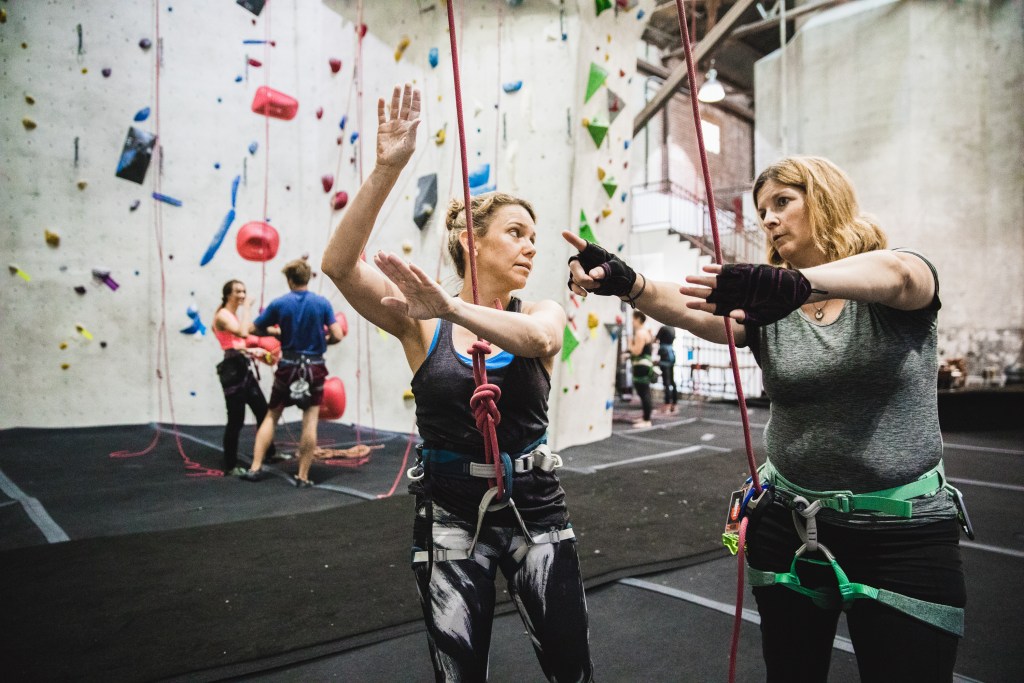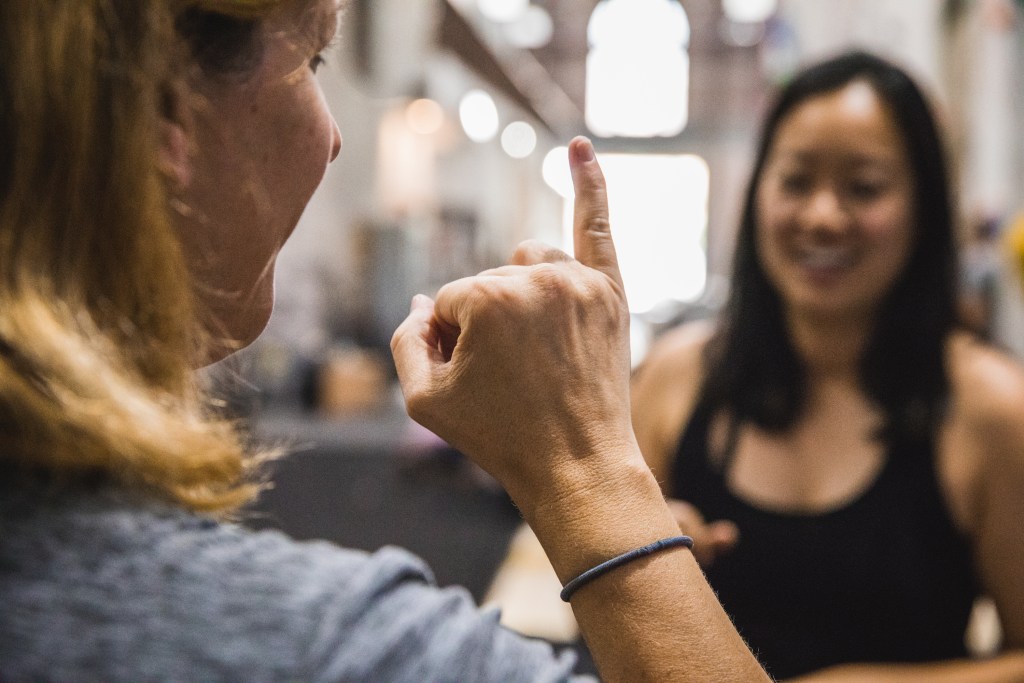Sonya was playing with toy cars on the floor of her home when she felt her mother’s angry presence in the doorway behind her. She couldn’t understand what her mom was saying or what was wrong, so she fled, out of the room and upward, hand over hand, onto the roof. Sitting up high, kicking her feet, she felt her pounding heart ease up beneath the stars, gently swaying pine boughs and shadows of the surrounding mountains.
“I looked around and kept that feeling inside,” Sonya Wilson recalled over thirty years later through an interpreter. “I felt safe.”
Sonya would seek that feeling again and again in her childhood. Scarred by abuse, she would escape her house and find ways to scramble up trees and across rock faces around her hometown of Las Vegas, Nevada.
Though Sonya wasn’t racking up, Vegas has drawn climbers for decades. Just outside of city limits sits Red Rock Canyon, which boasts a few thousand routes, lovely weather and everything from short sport routes to 20-pitch climbs.
It wasn’t until 1993, when Sonya was in college, that she was able to put on a harness of her own, as part of a climbing course offered by Azusa Pacific University. That’s where she was faced with the same problem all climbers encounter: how to effectively and safely communicate while climbing as part of a team.
This was particularly difficult for Wilson, who was born deaf. At the time there wasn’t a standard visual communication system for climbers. In fact, there still isn’t one.
All climbers have to communicate with each other without relying on hearing sometimes. They could stand as far as 50 feet above or below their partners, often in high winds or at noisy crags. As such, they have been trying to solve this communication problem for years.
Most recently, in 2015, the Marhold Tug, a system of communication composed of sharp, precise rope tugs, was developed by Trenton Marsh and Bucky Buckhold and published in the Adaptive Climbing Manual (Paradox Sports, 2015) as a way to communicate without sound. Two years later, in a 2017 publication called Climbing Communication, the American Alpine Club outlined a hypothetical scenario in which climbers cannot hear or see each other, instead relying on a series of agreed-upon actions without communicating at all. Neither method has become standard practice.

Despite the challenges of learning to climb without a standard communication system or even an interpreter, Wilson continued climbing on and off for the next two decades. In 2012, she got fed up.
That year, at the Red Rock Rendezvous climbing festival, it hit her: If she couldn’t communicate more effectively at the crag, she wouldn’t be able to progress in her climbing. After years of searching, she still hadn’t found any climbing groups for people fluent in American Sign Language (ASL). So she took matters into her own hands, founding the ASL Climbing Network in December 2012 to connect both Deaf and hearing climbers. She invited her friends, and they invited theirs. It’s grown slowly since.
In the beginning, the participants climbed together and used ASL to discuss what they were doing before, and sometimes during, climbs. But in 2012, Wilson learned through a friend how scuba divers sign underwater, and she was fascinated. “I realized, ‘Why not apply that to climbing as well?’” she recalls. “Why not focus on my strengths and not on what I don’t have?”
Before there was a clear-cut visual communication system, the Deaf climbers used simple signals—nodding their heads, giving thumbs ups or pointing toward the ground. When climbing with hearing people, they used the same strategies.
Over time though, it became clear that smaller signs were less noticeable over distance. The ASL sign for lowering, for example, is indicated by tapping two extended fingers on the palm of the other hand. Such a delicate hand signal was easily misunderstood, and it put climbers in a perilous position, forcing them to let go of the hold before signaling to their partner below. So Wilson and the climbers innovated, ultimately adopting three sharp taps on the top of your head for lowering.
Over the years, the group continued to refine its system. When confusion arose, members would gather to discuss, find the problem and troubleshoot a solution. Each of these situations helped contribute to the system the climbers use today.

And yet, like any communication system, the group’s language is still changing to this day. “It’s all about testing what works and what doesn’t,” Wilson said. “ASL, like any language, is constantly evolving as new signs are developed by the Deaf community. Climbing signs will always evolve and should as they fit different people—as long as those people can see it loud and clear.”
Of course, the ASL Climbing Network isn’t the only group of climbers working on this. There are other ASL groups popping up across the country—in Colorado, Oregon, New York, Washington, D.C. and the U.K. And hearing climbers are joining in, realizing that they can benefit from the innovative system each of these groups have developed.
“While a visual command system gives us the immediate benefit of communication on the wall, crag and the like, I think it has a rather radical potential to encourage new relationships with the environment, with the self, with the body, with interdependence, with communication and language,” said Day Heisinger-Nixon, an ASL interpreter and writer who grew up in an ASL-English bilingual household. “It has the power, perhaps, to reorient and ground, which, of course, are incredibly exciting prospects to consider.”
Effective communication is a challenge every climber faces. Wilson thinks that when the climbing wall is too busy or when you’re climbing a mountain where the air is thin and the winds are strong, or when you are attached to a rope team spaced too far apart to hear each other—or during any number of other scenarios—a visual communication system can be helpful.
“I truly believe that visual or alternate climb communication systems benefit everyone in the climbing community, Deaf and hearing people alike,” Wilson says. “It is important to diversify communication methods and be adaptable. These adaptable skills can save someone’s life.”


